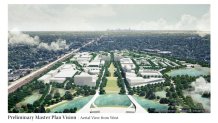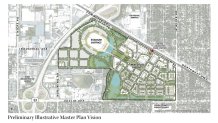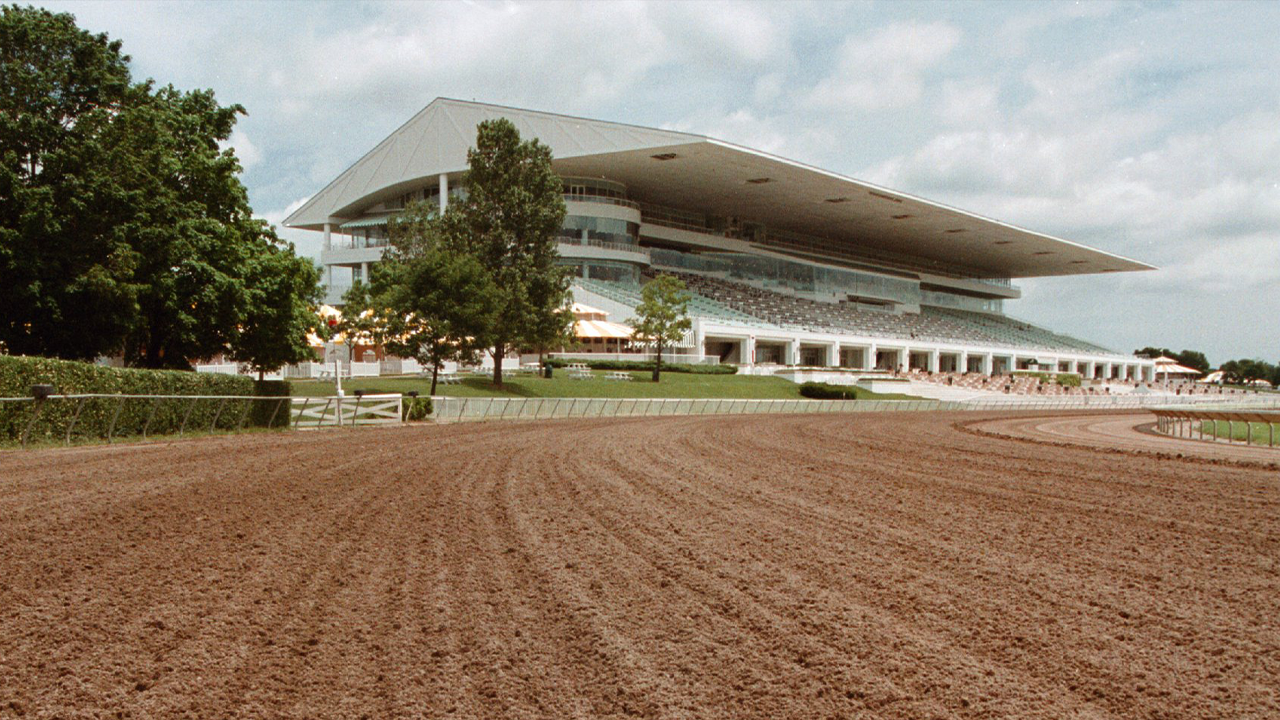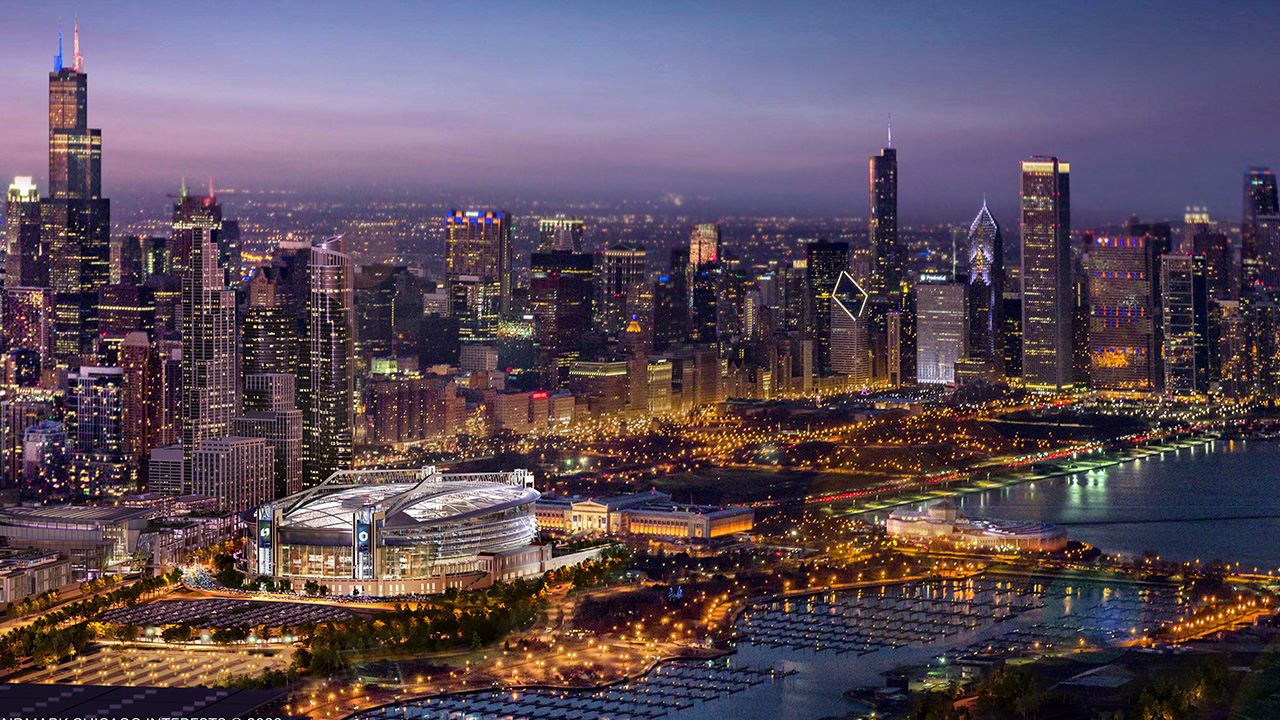The Chicago Bears offered up the first look at their conceptual plans for their potential new home in Arlington Heights, releasing a letter to residents ahead of a community meeting to discuss their massive design.
The Bears launched a new website Tuesday afternoon, detailing their potential plans for what will not only be a new stadium but a much larger mixed-used space. Included in the note are renderings of what such a project would look like.
"Make no mistake, this is much more than a stadium project," the letter reads, adding that nothing is guaranteed about the potential move from Soldier Field.
The meeting, which will be held from 7-9 p.m. Thursday at John Hersey High School in Arlington Heights, will detail what a Bears statement called “one of the largest development projects in Illinois state history.” Arlington Heights Mayor Tom Hayes said neither he nor members of the Arlington Heights village board would be part of the community meeting intended to field concerns and suggestions from residents of the suburb.
Read the full letter and see the renderings below:
In September 2021, the Chicago Bears signed an agreement for the purpose of acquiring 326 acres of property in Arlington Heights to secure the potential of beginning a new and exciting chapter there. We remain under contract to purchase the property, but there are conditions that must be met in order to be in a position to close. If we do close on the property, it does not guarantee we will develop it. While under contract with the seller of Arlington Park, we will not be discussing or exploring any other alternative stadium sites or opportunities, including renovations of Soldier Field. Much remains to be decided, but any decision will be made in the best interests of the Bears long-term future, our fans and the Chicagoland community.
If the team does proceed with the purchase of the Arlington Park property, and if the Bears organization then chooses to proceed with the development of the property, the project will be one of the largest development projects in Illinois state history. We envision a multi-purpose entertainment district anchored by a new, best-in-class enclosed stadium, providing Chicagoland with a new home worthy of hosting global events such as the Super Bowl, College Football Playoffs, and Final Four.
Make no mistake, this is much more than a stadium project. Any development of Arlington Park will propose to include a multi-purpose entertainment, commercial/retail, and housing district that will provide considerable economic benefits to Cook County, the surrounding region and State of Illinois. The long-term project vision for the entire property is an ongoing work-in-progress, but could include: restaurants, office space, hotel, fitness center, new parks and open spaces, and other improvements for the community to enjoy.
Above all, the Bears organization is committed to ensuring the project serves Cook County, the Chicagoland community and people of Illinois 365 days a year. If the decision is made to develop Arlington Park, it would yield significant economic benefits commensurate with the scale of the project. Construction of the proposed project is projected to create more than 48,000 jobs, result in $9.4 billion in economic impact for Chicagoland, and provide $3.9 billion in labor income to workers across the region, while the completed project will create more than 9,750 long-term jobs, result in $1.4 billion in annual economic impact for Chicagoland and provide $601 million in annual labor income to workers across Chicagoland. We also anticipate that the development will generate $16 million in annual tax revenue in addition to property taxes for Arlington Heights, $9.8 million for Cook County, and $51.3 million for the State of Illinois.
While the Bears will seek no public funding for direct stadium structure construction, given the broad, long-term public benefits of this project, we look forward to partnering with the various governmental bodies to secure additional funding and assistance needed to support the feasibility of the remainder of the development.
Feeling out of the loop? We'll catch you up on the Chicago news you need to know. Sign up for the weekly Chicago Catch-Up newsletter.
We are taking serious steps to evaluate the unique opportunity presented to us. The Bears remain committed to Soldier Field and will honor the terms of its lease. While the prospect of a transit-oriented mixed-use and entertainment district anchored by a new enclosed stadium is exciting for the Bears and the entire state, there is much work to be done before we can close on the property, and then, whether we will develop it. We look forward to working with key partners and stakeholders across the Chicagoland community and State of Illinois in the months ahead.



The Bears are in escrow for the former Arlington Racetrack site, for which they signed a $197.2 million purchase agreement last year. President/CEO Ted Phillips said in January he anticipated closing on the land to take until the end of this year and possibly even drag into early 2023.
“Our focus for long-term development is exclusively on that property at Arlington Park,” Phillips said in January.
Hayes said he expects the village to take up more substantial discussion about their negotiations with the team later this month. The village board is next scheduled to convene Tuesday.
While their current home at Soldier Field is historic, its stature is diminished by its deficiencies compared to state-of-the-art stadiums around the NFL. Soldier Field opened in 1924 and earned National Historic Landmark status in 1984 before losing it in 2006 after renovations left it with a mismatched look as though a spaceship had landed on top of the iconic columns.
Almost every stadium in the league far exceeds Soldier Field’s comfort and amenities, and late-season games on the lakefront can be brutally cold. It has been widely assumed that any new stadium would be indoors.
It has also been problematic for the Bears to rent the stadium from the Chicago Park District rather than owning their own building. That arrangement severely limits what they can do with the facility and cuts into revenue.
Soldier Field also has the NFL’s smallest capacity at about 62,000. There are 13 stadiums that can hold 70,000-plus, and most of those are in smaller markets than the Chicago area.
Building a stadium in Arlington Heights would immediately put the area in line to host a Super Bowl (currently sites are scheduled through the 2025 game). The league has rewarded every team that has done so with a Super Bowl, even if it’s not part of the regular rotation. The Vikings’ U.S. Bank Stadium opened in 2016 and hosted the Super Bowl in 2018.




